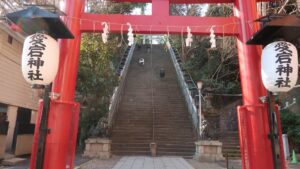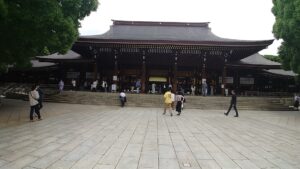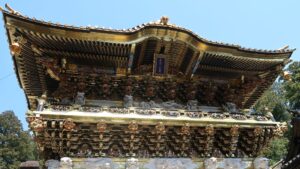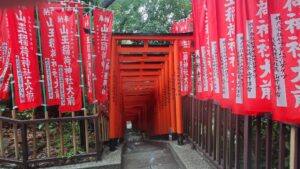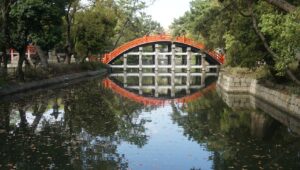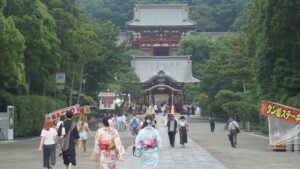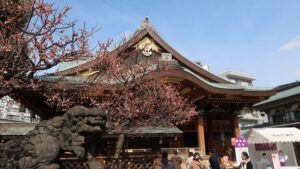Atago shrine
Area: Tokyo
Established on a Atago hill (23 m high sea level; natural highest place at 23 Tokyo metropolitan city) for preventing Edo city from fire, when Edo shogunate started in Edo. Famous of acute stone steps with legend a young nameless samurai dared to ride his horse up the stairs to deliver Japanese apricot blossoms to the third shōgun Iemitsu.
Meiji Shrine
Area: Tokyo
Vast artificial forest which consisted with more than 100 thousands tree donated from all over the Japan which planted 100 years to surrounding the shrine buildings enshrined Emperor Meiji and Empress Shoken.
Nikko Toshogu
Area: Tochigi
The shrine was built for enshrining Tokugawa Ieyasu, 1st shogunate of Tokugawa family, after his passed away in 1916. Shrine buildings complex consists of 55 buildings including superior significant buildings such as Yomei gate, Karamon gate and Five strories pagoda and so on.
Sannou Hie shrine
Area: Tokyo
The shrine was built same time of Edo castle. 1st shougunate Ieyasu became a patron of the Hie Shrine and worshipped the deity as the protector of Edo.
Sumiyoshi taisya
Area: Osaka
The shrine was established in 211 by empress-regent Jingū, who dedicated the shrine to three gods of the sea, Sokotsutsuno-o no Mikoto, Nakatsutsuno-o no Mikoto, and Uwatsutsuno-o no Mikoto, who are collectively called the Sumiyoshi Sanjin.
Tsurugaoka Hachimangu
Area: Kanagawa
In the late 11th century, Minamoto no Yoriyoshi established the shrine as the guardian deity of the Minamoto clan by inviting Iwashimizu Hachimangu Shrine in Kyoto. It attracted the faith of Minamoto no Yoritomo, the first
Yushima Tenmangu
Area: Tokyo
The shrine enshrines the spirit of Sugawara Michizane, a historical figure, a famous scholar, poet and politician as know Kami or deity of scholarship and learning. Many students visit this shrine to express their reverence to the enshrined spirit as Kami of Learning.


